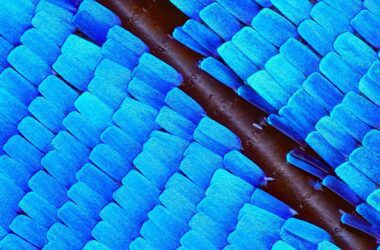Living invertebrates might be used as grippers by robots to assist them pick up difficult objects or grab things underwater.
“We don’t mean it as a replacement for robotics, but as a kind of new direction or new way to do both biology and robotics,” explains Josephine Galipon of Japan’s Tohoku University.
Others, however, have questioned whether this strategy is beneficial or ethical. Previously, researchers experimented with utilising live insects to drive complete robots and even whole dead spiders as robotic grippers. Galipon and her colleagues have created grippers out of pill bugs, a type of woodlouse, and chitons, marine mollusks that can cling to rocks like a limpet.
Custom 3D-printed housings were created for both creatures and mounted to a robot arm. Before releasing it, the pill bugs grabbed up and rotated a piece of cotton wool for around 2 minutes. Underwater, the chitons took on cork, wood, and plastic cylinders but did not easily release them.
While the release mechanisms must be improved, the chiton’s ability to pick up cork and wood is encouraging, as it is a challenging task for the suction cups commonly employed in underwater robotic grippers, according to Galipon.
According to Steve Davis of the University of Birmingham in the United Kingdom, it is a unique method, but it is unclear what jobs the insects would be able to accomplish that existing robotic grippers cannot. “It’s different, but what’s it trying to address?” he wonders.
Galipon didn’t indicate what duties the grippers might be good for, just that “to move forward in robotics, we may need to stop putting labels on things.”
There are also “all sorts of ethical questions surrounding this work,” according to Davis, especially if researchers begin attempting to manipulate when the animals hold and release items.
The creatures were not injured, according to Galipon; following the experiment, the pill bugs were released back into the wild, while the chitons continued to exist in a water tank. “Especially for sentient animals, we would like to establish a kind of mutual interaction with a cooperative relationship,” Galipon explains. “It’s not quite domestication, but it’s a cooperative relationship in which the animal can then go about its business.”
FAQs
1. What are scientists aiming to achieve by using living woodlice as robotic grippers?
Scientists are exploring the possibility of using living invertebrates, such as pill bugs and chitons, as grippers for robots to pick up difficult objects and enhance underwater grasping capabilities.
2. How do pill bugs and chitons function as grippers for robots?
Researchers at Japan’s Tohoku University created custom 3D-printed housings for the creatures, mounting them to a robot arm. The pill bugs showed the ability to grasp and rotate objects like cotton wool, while chitons demonstrated their gripping ability with cork, wood, and plastic cylinders underwater.
3. What advantages do living woodlice grippers offer over traditional robotic grippers?
Living woodlice grippers provide a unique and potentially more versatile gripping mechanism for underwater robotic applications compared to standard suction cups.
4. What are the ethical concerns surrounding this research?
There are ethical questions regarding the use of living creatures in robotics and whether manipulating their behaviors for robotic applications is appropriate.
5. How do researchers view the potential of living woodlice grippers in robotics?
While the exact roles for these grippers are still being explored, scientists see it as an innovative new direction in both biology and robotics, offering intriguing possibilities.







